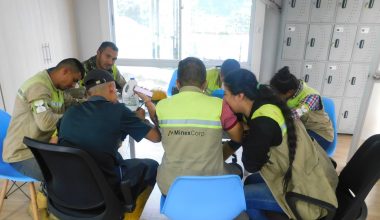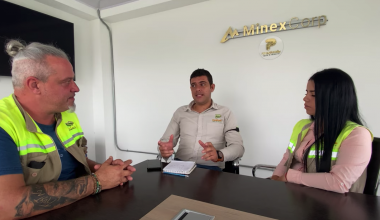David Olaya Betancourt is a lawyer from the University of Medellín (Colombia) and has studied International Business Law at the University of Barcelona (Spain). He specializes in Business Law and has more than 5 years of experience in structuring and analyzing businesses, senior management and marketing and financial management. He is also an advisor to several international companies and participates in various mining projects. Since 2013, he has been the General Manager of “Estrategias Jurídicas”, a law firm, and since 2017, General Director of “Minera Guayaquil” (whose largest shareholder is MinexCorp).
David has been the one who opened the door for MinexCorp to mine gold. He was the one who proposed to Fernando García Sanz (CEO of InnovaMinex) to invest in gold mines. He was the one who introduced key people in that area to Fernando, and acted as a filter for unwanted relationships. From 2017 he entered the field of cryptocurrencies and blockchain, being a legal advisor to CCoins Labs (ccoins.io), creating an platform for the exchange of cryptocurrencies. Therefore, as an expert in both, mining projects and cryptocurrencies, as well as blockchain and Exchanges, he was invited to participate in the negotiations for the creation of InnovaMinex, which took place in Málaga, with Fernando García Sanz (CEO), Jaime Valero (CAO), Francisco Montero (CSO) and Rafael Enríquez (CINO).
“This is one of the few truly tangible cryptocurrency projects. The first challenge to overcome in such an ambitious project is to create a productive mining cycle for which large resources are required”, says David. In practice, obtaining a mining title in Colombia costs several million dollars.
“In our mining project we are very cautious when investing, avoiding any squandering of capital. Our project already has business structure, exploratory studies, design, etc., and that is an important guarantee”.
On the other hand, numerous contacts were made to obtain the database of exploitable gold mines in Colombia. “We have traveled a lot throughout the country and that has not only provided us with a large database of projects, but has opened important doors for us to increase the number of mining resources in the future”.
He created a series of rules for MinexCorp to analyze the viability and conditions when entering different mining projects. The first thing that had to be done was a series of preliminary studies to be able to conclude if the mining resources were interesting. Second, security was fundamental.
Nothing that was outside the legal framework was accepted. Another rule was that the mining project was relatively close to urban areas, in accessible places. And, finally, there was the negotiation phase with the owners. In many of the mines whose rights MinexCorp has acquired, mining is still done manually.
Therefore, “it has been essential to explain to the owners that, even with a lower percentage of return from the mines, when they get more technified, they will obtain considerably more profits than before”. All the rights that MinexCorp has over the mines are certain and provable.
“The really difficult part of the mining project is the realization of feasibility studies, and that is already done. We have everything planned and ready to start building the mines. In 3 months we could have all the construction ready. In fact, for greater peace of mind for investors in our project, we have a legal document drafted by an external entity, which states that we have all the legal requirements and all licenses to develop the exploitation without any type of problem. With the green light to the project, we only need to raise the money to finance it, and the results will start to come very quickly”, explains David. For the people that acquire INX, “some of the guarantees of this project are public information and legality, since there are no clasified documents”.

